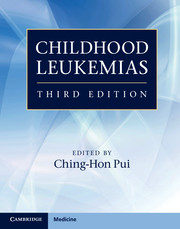Book contents
- Frontmatter
- Contents
- List of contributors
- Preface
- Section 1 History and general issues
- Section 2 Cell biology and pathobiology
- Section 3 Evaluation and treatment
- Section 4 Complications and supportive care
- 29 Acute complications
- 30 Late complications after leukemia therapy
- 31 Therapy-related leukemias
- 32 Infectious complications in leukemia
- 33 Hematologic supportive care
- 34 Pain management
- 35 Psychosocial issues
- 36 Nursing care
- Index
- Plate Section
- References
32 - Infectious complications in leukemia
from Section 4 - Complications and supportive care
Published online by Cambridge University Press: 05 April 2013
- Frontmatter
- Contents
- List of contributors
- Preface
- Section 1 History and general issues
- Section 2 Cell biology and pathobiology
- Section 3 Evaluation and treatment
- Section 4 Complications and supportive care
- 29 Acute complications
- 30 Late complications after leukemia therapy
- 31 Therapy-related leukemias
- 32 Infectious complications in leukemia
- 33 Hematologic supportive care
- 34 Pain management
- 35 Psychosocial issues
- 36 Nursing care
- Index
- Plate Section
- References
Summary
Introduction
Infections remain the major cause of morbidity and mortality in children with cancer in general and with hematologic malignancies in particular. That is because their defense mechanisms, already weakened by the underlying malignancy, are further compromised by the therapeutic cytotoxic chemotherapy. Typically, since the 1960s, the risk of infection has been inversely related to the absolute neutrophil count and the duration of neutropenia. However, as new mechanisms are being targeted by the advancing discoveries in anti-leukemia chemotherapy, other components of the immune system have become compromised including the complement cascade and immunoglobulin producing B-lymphocytes, T-lymphocytes, and monocytes/macrophages.
Risk factors for infections in children with leukemia
Numerous factors contribute to the decreased efficacy of the host defense mechanisms in patients with leukemia. These factors include disruption of the skin and mucous membrane physical barriers, impaired function of the immune system, dysfunction of the cytokine mediators, and altered normal microbiologic flora.
- Type
- Chapter
- Information
- Childhood Leukemias , pp. 772 - 793Publisher: Cambridge University PressPrint publication year: 2012



